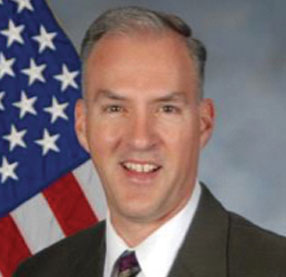Two decades ago, the Volpe National Transportation System Center released its landmark report on the vulnerability of GPS. Have this study and its many successors helped move us to the necessary levels of PNT resilience? Have we done enough? What is left to be done?
“This study and others underscore that safety must be maintained in the event of GPS loss. Among the many recommendations, I maintain that ‘systems and procedures to monitor, report, and locate unintentional [and intentional] interference should be implemented.’ Similar to GPS integrity monitoring, awareness of signal vulnerability ‘hot spots’ may allow an understanding of the RF landscape, and thus users may employ tactics, tools and techniques to combat against it. This ‘issue’ will not be solved with a singular solution; rather, continued education and urgency will produce innovative solutions over time. I just hope that a large ‘trigger event’ is not needed to do so.”
— Bernard Gruber, Northrop Grumman
“We have widespread awareness now, but not enough implementation of safeguards. There is no one simple solution – a single alternative system to GPS is not the answer. Rather, the integration of several diverse alternative PNT sources will provide the necessary resiliency. DHS and NIST have taken the proper initial steps to set standards for resiliency, but the next step is implementation. Twenty years without a major incident has only reinforced complacency, but we can’t keep betting our luck will continue. We have everything we need now — the technology, the standards, the exec orders — let’s implement!”
— John Fischer, Orolia
“This study was instrumental in getting the U.S. government to face the fact that GPS is vulnerable on many fronts. It seems that the first response was to focus on making signals more robust and therefore less vulnerable. The backup systems, alternatives, or simply additional sensors have come onto the scene very slowly due to factors that include funding, politics, and difficulty in deployment on all platforms, where the costs could be astronomical. I hope that it doesn’t take a catastrophic event to force all factions to come together to find best solutions, but that is sadly often the case.”
— Ellen Hall, Spirent Federal Systems
GPS World Editorial Advisory Board
Tony Agresta
Nearmap
Miguel Amor
Hexagon Positioning Intelligence
Thibault Bonnevie
SBG Systems
Alison Brown
NAVSYS Corporation
Ismael Colomina
GeoNumerics
Clem Driscoll
C.J. Driscoll & Associates
John Fischer
Orolia
Bernard Gruber
Northrop Grumman
Ellen Hall
Spirent Federal Systems
Jules McNeff
Overlook Systems Technologies
Terry Moore
University of Nottingham
Mitch Narins
Consultant
Bradford W. Parkinson
Stanford Center for Position,
Navigation and Time
Stuart Riley
Trimble
Jean-Marie Sleewaegen
Septentrio
Michael Swiek
GPS Alliance
Julian Thomas
Racelogic Ltd.
Greg Turetzky
Consultant


